Scot Ansgeulaiche of the Walking Theatre Company strikes a pose reminiscent of the opening section of Alvin Ailey’s ballet Revelations against the backdrop of the ruins of Urquhart Castle in the Scottish Highlands, the scene of centuries of bloody carnage in the conflict between the Scots and the English.
Revelations is a stirring expression of the impact of slavery on the African-American experience, but also a broader reflection of the inner turmoil, the alternating rage and fear, despair and optimism, of an oppressed people struggling for freedom. Ailey’s seamless blending of movement from classical ballet, jazz, modern, and African tribal dance traditions transcends any particular place or time in history.
The movements in the opening section alternate between yearning skyward – seeking deliverance – and sinking back into the ground. The frequent deep pliés in a wide stance are accompanied by a spreading of the arms like wings – not the rapid insubstantial beating of light feathers, but a slow agonized hovering barely off the ground.
Urquhart Castle lies on a rocky cape on the northern banks of Loch Ness – an ideal site for a fortress, surrounded on three sides by the deep waters of the Loch, with prominent views of the surrounding approaches. Stark and windswept, the site conjures up romantic depictions of Scottish patriots, like Sir William Wallace of Braveheart legend, who fought valiantly against the formidable English. He died a martyr and became a symbol of Scotland’s struggle for freedom.
The Walking Theatre Company brings elements of Scottish history to life at the castle, compelling sightseers to follow the actors as they wander the ruins, weaving their story-telling magic alternately in English and Scottish Gaelic.
This tiny country has a vibrant theatre and dance scene, and you see a broad cross-section of the population in theatres – unlike the narrow demographic you find at New York’s Lincoln Centre, Washington’s Kennedy Centre or San Francisco’s War Memorial Opera House. It’s not simply a question of more affordable ticket prices: theatre-going is still considered a vital everyday pursuit.
A perfect illustration of Scotland’s commitment to the arts is Dance Base, the embodiment of a truly democratic vision of bringing dance to the entire community. Located in a striking renovated space in Edinburgh’s historic Grassmarket, Dance Base receives public funding as well as corporate and private donations, and outreach is an important element of its program, as is a steady stream of workshops which bring in professional companies, both large established ones as well as smaller lesser-known troupes, who rehearse and choreograph in one of Dance Base’s four breathtaking studios and invite the public in for viewings.
 Meanwhile, back at the ranch, with former Joffrey Ballet scholar Rahm Emanuel no longer aiming his lethal grands battements at the Philistines in the House and Senate, the National Endowment for the Arts is bracing itself for a proposed 13% budget cut, while Obama’s jobs bill promises to modernize classrooms and pay teachers to get those math and science scores up so we can beat the Singaporeans and Koreans in the next Math Olympics, but, sadly, fails to recognize the importance of the arts in educating the whole child.
Meanwhile, back at the ranch, with former Joffrey Ballet scholar Rahm Emanuel no longer aiming his lethal grands battements at the Philistines in the House and Senate, the National Endowment for the Arts is bracing itself for a proposed 13% budget cut, while Obama’s jobs bill promises to modernize classrooms and pay teachers to get those math and science scores up so we can beat the Singaporeans and Koreans in the next Math Olympics, but, sadly, fails to recognize the importance of the arts in educating the whole child.
The Senate already voted 73 to 24 (a disturbingly wide margin) to cut funding for the arts from the economic recovery bill – a trifling $50 million. The cut was supported by otherwise sane and well-respected senators including Chuck Schumer and Dianne Feinstein.
The NEA’s 2010 budget of $167.5 million – about 54 cents per citizen – is less than the current price tag of one F-35 Lightning II stealth fighter jet. 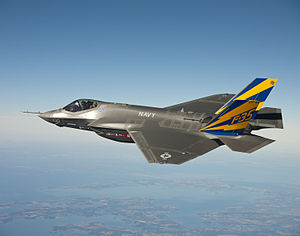 The U.S. government plans to order 2,443 of these sleek babies from Lockheed Martin, for a grand total of $382 billion. When handed an invoice of this magnitude, who in their right mind wastes time fussing over the NEA’s tiny morsel of a budget?
The U.S. government plans to order 2,443 of these sleek babies from Lockheed Martin, for a grand total of $382 billion. When handed an invoice of this magnitude, who in their right mind wastes time fussing over the NEA’s tiny morsel of a budget?
And with foreign aid proposed at $12 billion for 2012, it may be time to hark back to the 1950’s when government-funded tours by American performing arts troupes overseas – particularly to countries hostile to America – were a critical component of foreign policy, deemed a huge success in improving the nation’s foreign relations.
Today, it costs about $1 million to send a major company like American Ballet Theatre overseas. For the price of one F-35 we could send 156 companies the size of ABT on overseas missions to win hearts and minds.
Don’t get me wrong… Ballet to the People is a fierce hawk – her grandparents died fighting for America as leaders of the underground resistance against the Japanese in World War II – and she firmly believes that the world’s peacekeeper should be armed with enough intimidating weaponry to scare the hell out of the enemies of the free world. But in an era when $549.7 million in spare parts shipped to U.S. contractors in Iraq in one year goes missing and unaccounted for, she thinks legislators should stop searching for pennies in the arts budget and be smarter about deploying one of the best weapons in its arsenal: our performing arts companies.


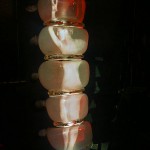
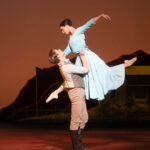
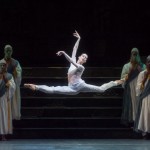
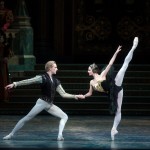

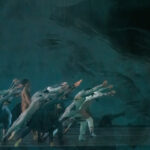
Great work you’re doing! I added you to my blogroll! Best wishes……
Oh good Lord, three years after I wrote this piece, the F-35 fighter jet still isn’t operational, and today it appears it can’t even take down enemy aircraft of much older vintage.
U.S. military officials are doing backflips to try and explain its failure to perform in a recent test of old-school dogfighting. https://gma.yahoo.com/military-don-t-worry-f-35-most-expensive-213045869–abc-news-topstories.html
Think of what the arts world could have done with a fraction of that wasted budget.